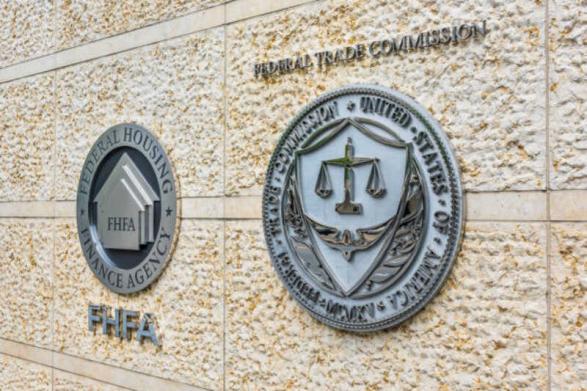Understanding Fannie Mae: Your Comprehensive Guide
Dec 10, 2023 By Susan Kelly
Fannie Mae, formally known as the Federal National Mortgage Association (FNMA), is an integral part of the U.S. housing finance sector. Established during the Great Depression, it has been a pivotal player in facilitating homeownership for millions of Americans. This guide aims to provide a comprehensive understanding of Fannie Mae, its history, how it operates, and its significance in the broader financial landscape.
Overview of Fannie Mae

Fannie Mae was created in 1938 by the U.S. government to provide stability and liquidity to the housing market in times of economic downturn. It operates as a government-sponsored enterprise (GSE), meaning it is privately owned but with a mandate to serve public policy goals. Fannie Mae works closely with other entities, including the Federal Housing Administration (FHA) and the Department of Housing and Urban Development (HUD), to fulfill its mission.
History of Fannie Mae
Fannie Mae was formed through the National Housing Act of 1934, which established the Federal Housing Administration. Its initial purpose was to purchase mortgages from banks and other lenders, thereby providing them with liquidity to continue lending. In the 1960s, Fannie Mae began securitizing mortgages, meaning it bundled loans into mortgage-backed securities (MBS) and sold them to investors. This process allowed Fannie Mae to continue purchasing mortgages while also providing a steady stream of income.
In 1968, Fannie Mae was privatized and became a shareholder-owned company, with the goal of reducing the government's financial burden. Despite this change, it still maintained close ties with the government through its charter, which granted it certain privileges and responsibilities. In 1970, Fannie Mae was authorized to purchase conventional mortgages in addition to FHA-insured loans.
What Fannie Mae Does?
Fannie Mae's primary role is to increase the availability and affordability of mortgage credit for homebuyers. It does this by purchasing mortgages from lenders, which provides them with funds to make new loans. This process also allows lenders to transfer the risk of default onto Fannie Mae, freeing up their capital to make more loans.
In addition to purchasing mortgages, Fannie Mae also provides mortgage-related services, such as loan securitization and credit risk management. It also offers various tools and resources for homebuyers, including educational materials and a variety of loan options.
Why Fannie Mae is Important?
Fannie Mae's significance goes beyond the housing market. As one of the largest financial institutions in the world, its actions have a significant impact on the financial industry and the overall economy. Fannie Mae's securitization of mortgages has greatly contributed to the growth of the secondary mortgage market, which provides a vital source of funds for lenders.
Moreover, Fannie Mae's role in promoting homeownership has been crucial in increasing access to housing for millions of Americans. Its programs and resources have helped make homeownership more affordable and attainable for low-to-middle-income families.
How Fannie Mae Affects Home Buyers?
Fannie Mae's actions have a direct impact on home buyers in several ways. First, by purchasing mortgages from lenders, Fannie Mae helps keep interest rates stable and affordable for borrowers. This allows more people to qualify for loans and purchase homes.
Secondly, Fannie Mae offers loan options that cater to different needs and financial situations of homebuyers. This includes programs such as the HomeReady Mortgage, designed for low-to-middle-income borrowers, and the 3% Down Payment Program, which allows qualified borrowers to purchase a home with a lower down payment.
Lastly, Fannie Mae's credit risk management plays a significant role in determining mortgage rates. Its policies and practices affect the overall level of risk in the housing market, which can contribute to fluctuations in interest rates and the availability of credit for homebuyers.
The Future of Fannie Mae

In the wake of the 2008 financial crisis, Fannie Mae faced significant challenges and had to be bailed out by the U.S. government. As a result, there have been ongoing discussions about reforming the GSE, with proposed changes such as privatization and greater regulation.
However, Fannie Mae remains a critical player in the housing market and continues to adapt to changing circumstances. Its mission of promoting homeownership remains unchanged, and it continues to innovate and provide resources for homebuyers.
Controversies and Criticisms
Fannie Mae has faced its fair share of controversies and criticisms over the years. One major criticism is that it contributed to the 2008 financial crisis by purchasing and securitizing risky mortgages, which ultimately led to widespread defaults.
Moreover, there have been allegations of accounting irregularities and manipulation of earnings at Fannie Mae, leading to investigations and lawsuits. These controversies have raised questions about the accountability and transparency of the GSE.
Despite these challenges, Fannie Mae remains a critical institution in the U.S. housing market and continues to play a vital role in providing access to affordable mortgage credit for homebuyers. As the housing finance landscape evolves, it is essential to monitor and address any issues that may arise with Fannie Mae to ensure its continued success in fulfilling its mission. So, Fannie Mae will continue to be a key player in the housing market for the foreseeable future, shaping the landscape of homeownership and mortgage finance in the United States.
Conclusion
Fannie Mae's history is closely intertwined with that of the U.S. housing market, and its impact goes beyond just providing stability and liquidity. As the nation's largest source of mortgage credit, it plays a vital role in promoting homeownership and fueling economic growth. While there have been controversies and challenges along the way, Fannie Mae remains a critical institution in the housing market and continues to evolve to meet the changing needs of homebuyers. It will be interesting to see how this GSE navigates the ever-changing landscape of mortgage finance in the future.








